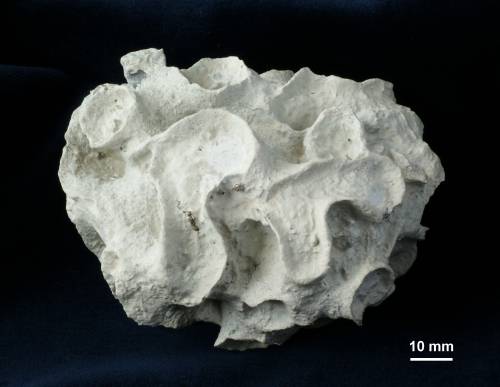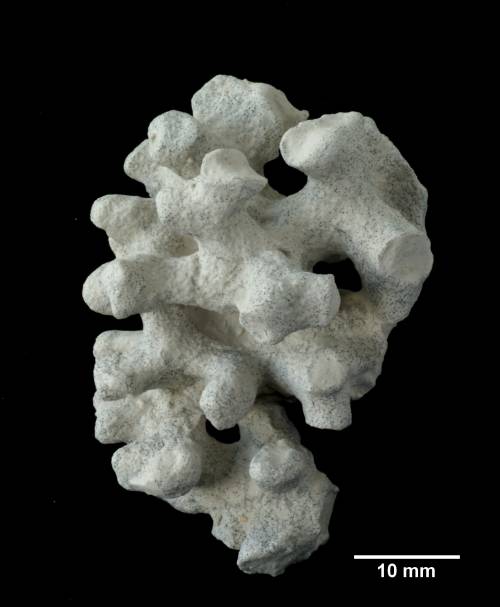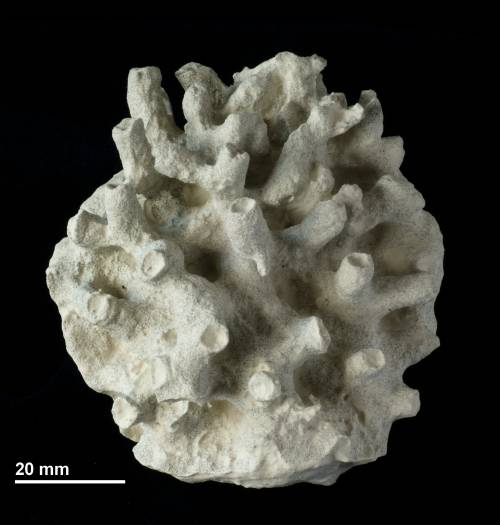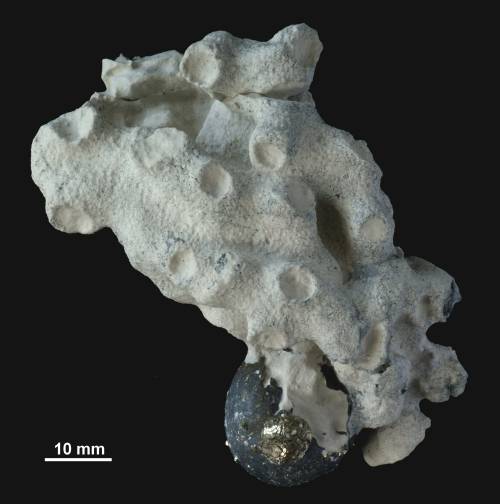
Eurete sp. A
unidentified species *
Various kinds of Eurete species occur in the Lower Campanian of Höver. Although not very rare, they are generally overlooked by most collectors. Moreover, even modern examples of Eurete are poorly known and difficult to identify, and this is definitely so with fossil material. For an excellent contribution on fossil Euretidae see Reid (1958-1963).
The first specimen shown here consists of a thin (one quarter of a millimeter) skeletal sheet folded into short (5 to 10 mm), wide (15 to 20 mm) anastomosing tubes. It has a lumpy habit and no point of attachment can be discerned.
The skeleton, although poorly preserved, is made up of hexactines, apparently with slightly enlarged nodes. The skeletal structure consists of a fairly regular meshwork of cubic cells.


Eurete sp. B
unidentified species *
The second Eurete sp. (two examples shown here) consists of thin (5 mm), long (20 mm) tubes which divide dichotomously and form anastomoses.
This species is perhaps the same as Schrammen's (1912) Eurete rauffi,
The dictyonal skeleton is fairly regular, with cubic meshes, but the external parts of the skeleton are less well ordered, and many triangular meshes are observed. The dictyonal hexactines show spherically enlarged nodes.

Eurete sp. C
unidentified species *
The third Eurete species consists of several intertwisted and longitudinally interconnected tubes or folds with numerous circular parietal oscula. The parietal oscula are actually the ends of very short side tubes. All tube diameters are very similar, in the range of 5 to 7 mm. At the base, the sponge is attached to the corona of an urchin (Galeola senonensis).
The skeleton consists of a quite irregular hexactine meshwork. The hexactines show spherically enlarged nodes.
The present species has some similarities to Eurete setosum as described by Reid (1961) from the Cenomanian of Berkshire, Great Britain.